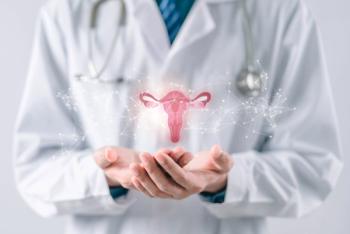
Exemestane reduces breast cancer incidence after menopause
Over a 3-year period, exemestane reduced the relative incidence of invasive breast cancer by 65% in healthy postmenopausal women at moderately increased risk for breast cancer, according to the findings of a randomized trial.
Over a 3-year period, exemestane reduced the relative incidence of invasive breast cancer by 65% in healthy postmenopausal women at moderately increased risk for breast cancer, according to the findings of a randomized, placebo-controlled, double-blind trial. It also reduced the risk for known breast-cancer precursor lesions (ie, ductal carcinoma in situ, lobular carcinoma in situ, atypical ductal hyperplasia, and atypical lobular hyperplasia), suggesting the possibility that the agent would further reduce invasive cancers during long-term follow-up.
The trial involved almost 5,000 women with a median age of 62.5 years and a median Gail risk score of 2.3%. All the women had at least 1 of the following risk factors: 60 years of age or older; Gail 5-year risk score greater than 1.66%; prior atypical ductal or lobular hyperplasia or lobular carcinoma in situ; or ductal carcinoma in situ with mastectomy.
After a median follow-up of 35 months, researchers recorded 11 invasive breast cancers in the exemestane group and 32 in the placebo group for a 65% relative reduction in the annual incidence of invasive breast cancer (0.19% vs 0.55%; hazard ratio [HR], 0.35; 95% confidence interval [CI], 0.18-0.70; P=0.002). The annual incidence of invasive plus noninvasive breast cancers in the exemestane group was less than half that in the placebo group (0.35% vs 0.77%, respectively, HR, 0.47; 95% CI, 0.27-0.79; P=.004). Many of the tumors that occurred were estrogen-receptor–positive, which often have a poor prognosis; exemestane also reduced these.
Goss PE, Ingle JN, Alés-Martínez JE, et al. Exemestane for breast-cancer prevention in postmenopausal women. N Engl J Med. 2011;364(25):
2381-2391.
Newsletter
Get the latest clinical updates, case studies, and expert commentary in obstetric and gynecologic care. Sign up now to stay informed.









